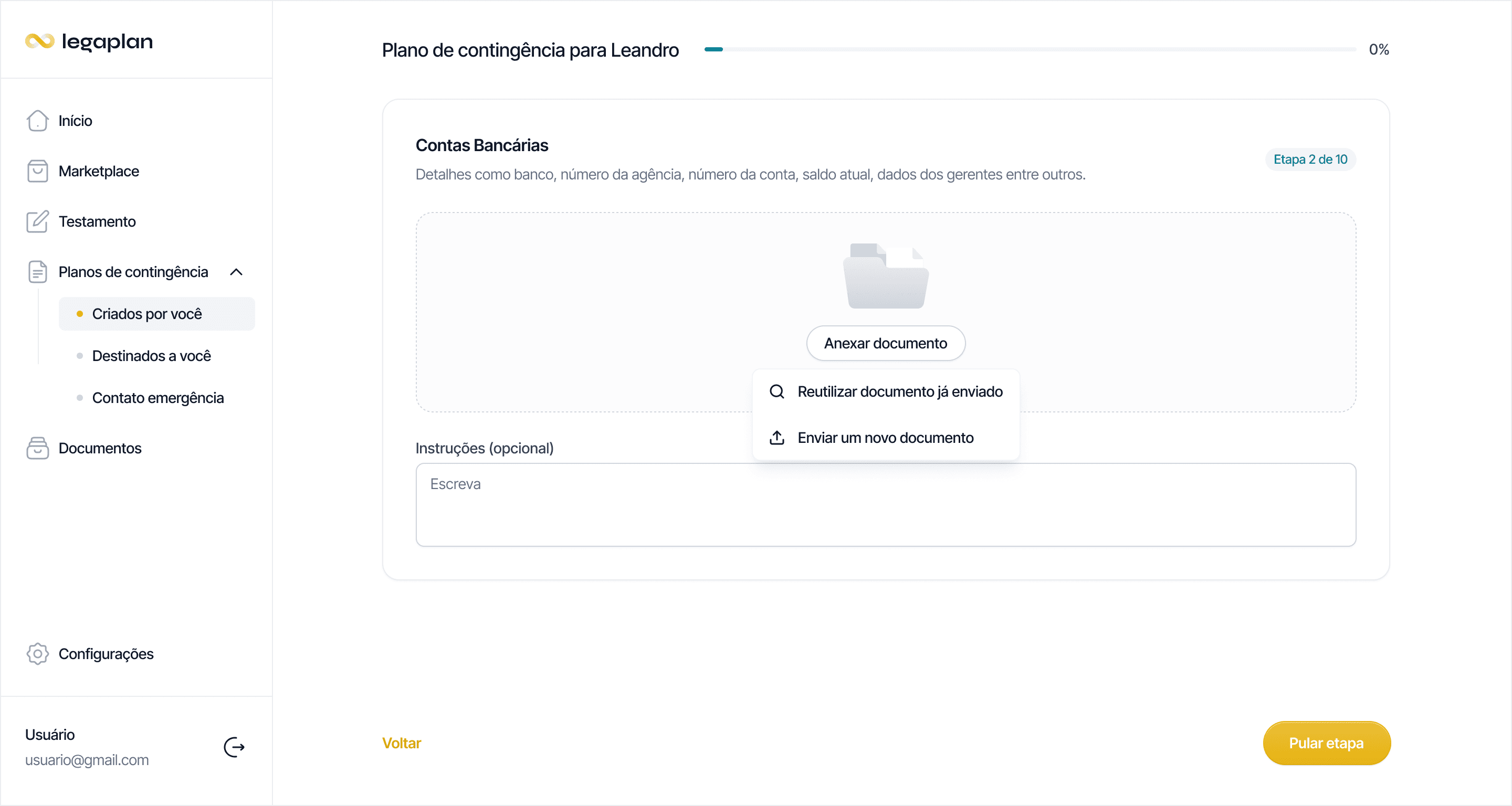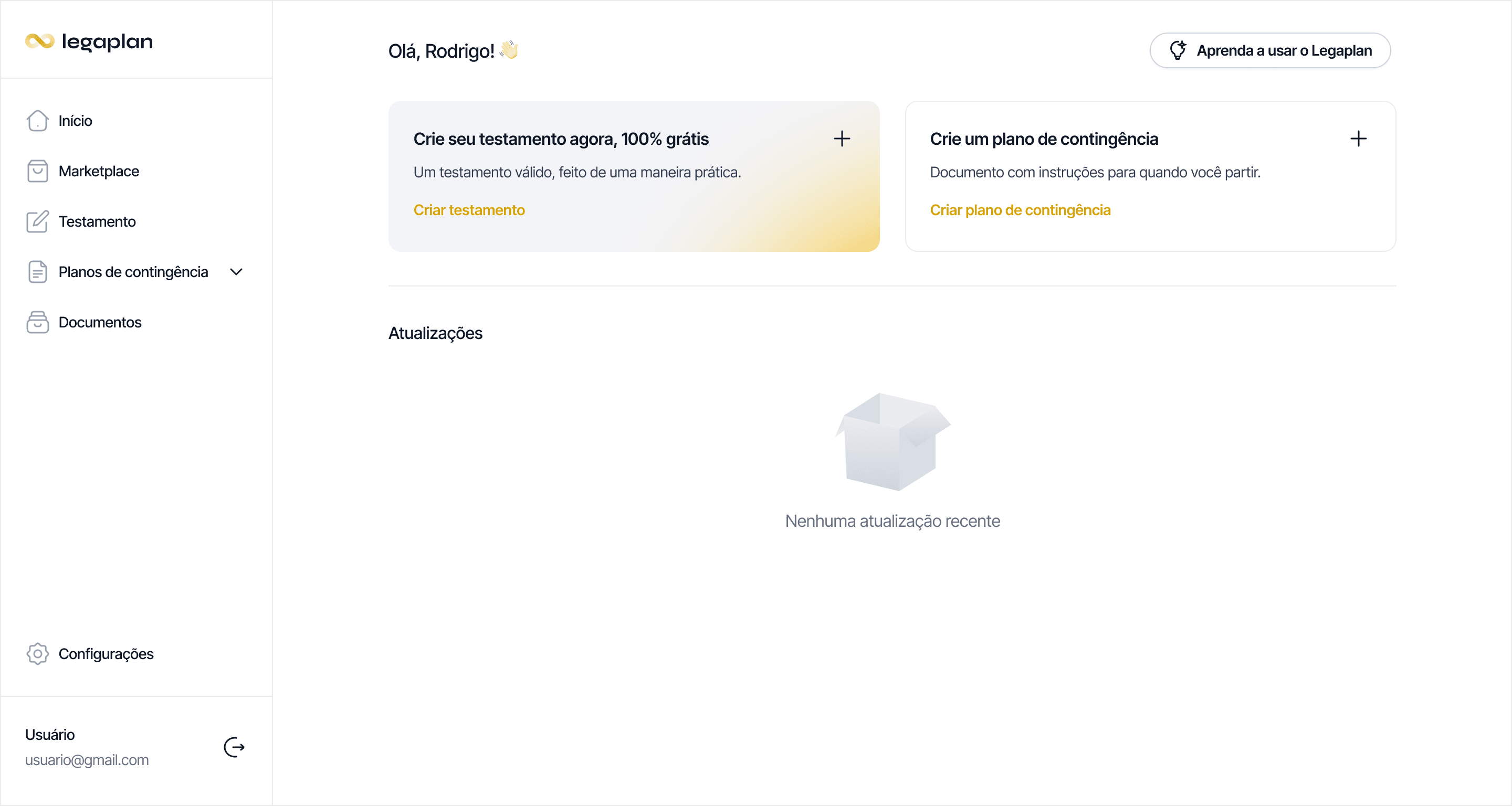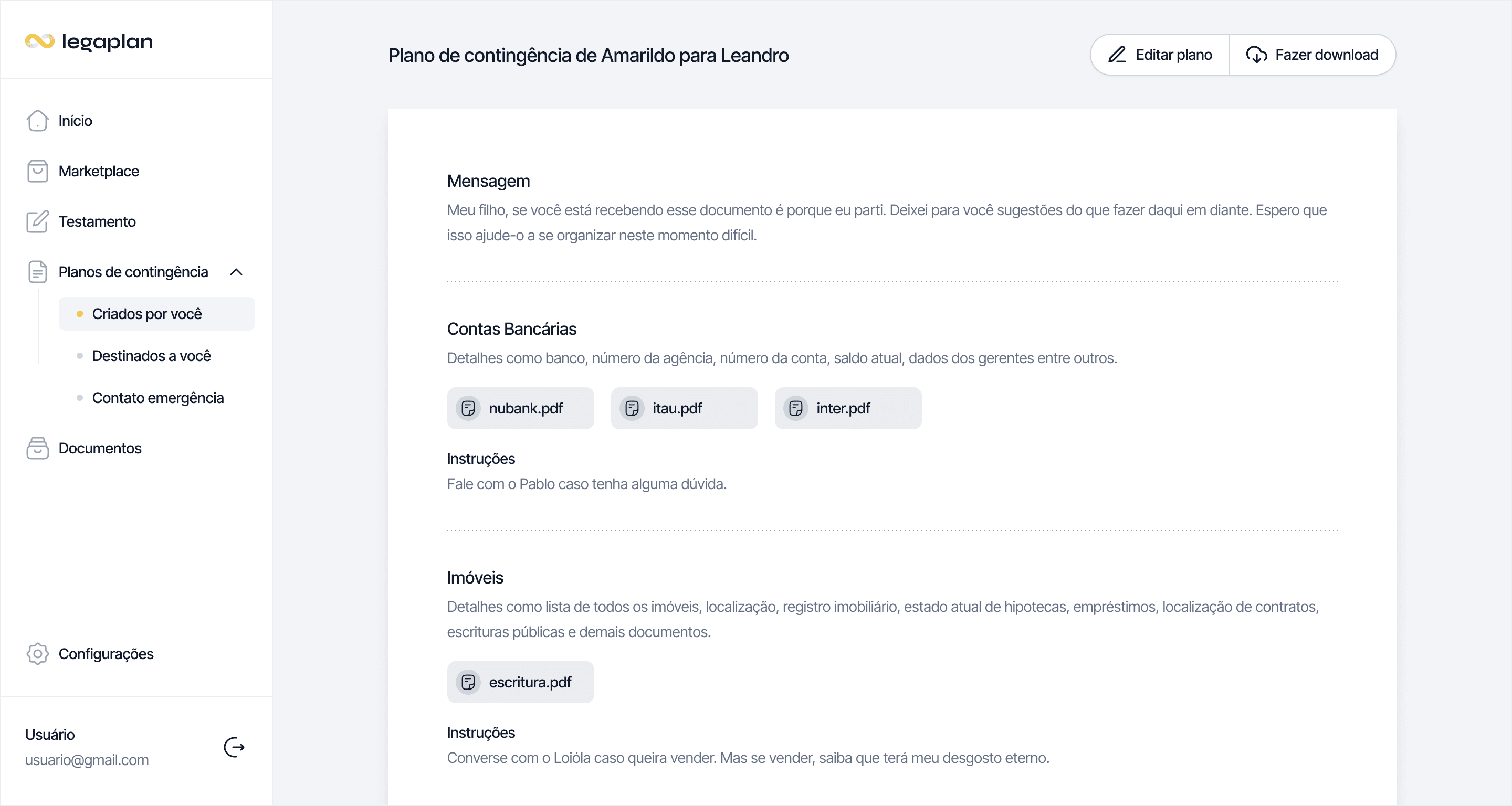Legaplan
Overview
Legaplan is a web application designed to help users plan their legacy, ensuring their wishes are properly documented and their families are protected after their passing.
The project was commissioned by a law firm specializing in estate planning. While the firm had deep subject-matter expertise, they noticed their clients struggled to organize wills, powers of attorney, and other end-of-life documents in a clear and secure way.
In Brazil, succession planning is often complex, bureaucratic, and rarely digitized. Legaplan set out to address this gap by providing a simple, trustworthy, and centralized digital solution for managing legacy-related documents.
As the sole UX designer on the project, I led the end-to-end design process — from research and wireframes to the final UI — collaborating closely with developers throughout implementation.
Internal Research
Stakeholder interviews
I conducted workshops and 1:1 interviews with the law firm’s partners and legal specialists to understand their workflow and the pain points experienced by their clients.
Key insights included:
Many clients were overwhelmed by legal jargon and needed clearer guidance
There was a high reliance on paper documents and no secure digital backup
Clients often delayed their estate planning because of the perceived complexity
User interviews
I also interviewed 8 end clients of the law firm, focusing on people aged 40–65 who were actively preparing their wills or other legacy documents.
Recurring themes from these sessions:
Fear of making mistakes that could harm their family later
Confusion about what documents were necessary
Lack of trust in sharing sensitive data online
Competitive analysis
I reviewed 4 other legacy-planning or document-storage products on the market. Most lacked local legal compliance or had interfaces not adapted to Brazilian regulations. This validated the opportunity for a user-centered, legally robust tool.
The Challenge
After synthesizing the research, I identified three core challenges:
Demystify legal language to make it accessible to the general public
Build trust in a sensitive process involving death and financial assets
Provide a structured flow so users could complete their plans with minimal legal errors
These challenges guided the overall design direction.
Objectives
From these challenges, I defined six objectives to steer the UX strategy:
Design an intuitive flow that could guide non-expert users step by step through complex legal decisions
Create a clear, friendly visual language to reduce anxiety around end-of-life planning
Implement strong security practices and transparently communicate them to build trust
Structure document templates in a way that aligned with Brazilian law, minimizing user errors
Collaborate with legal experts to validate every step of the journey
Enable future scalability for other document types beyond wills and powers of attorney
Results
Wireframes & Prototypes

I developed low-fidelity wireframes to explore different structural and interaction approaches. These early layouts were shared with lawyers and real users to gather feedback and validate the overall direction.
Based on their input, I iterated on key elements and the overall look and feel of the experience.
Information Architecture & User Flows

I mapped out key user journeys — including creating a will, appointing a guardian, and managing document beneficiaries — to define a logical and reassuring flow. This included:
Progress indicators to help users track where they were in the process
Simple tooltips with plain-language explanations of legal terms
Save-and-resume functionality, allowing users to work at their own pace
Final UI Design



The visual identity balanced professionalism with empathy, using a calm color palette, large readable typography, and human-centered illustrations. This helped reduce the intimidating feel often associated with legal apps.
Developer Collaboration

I worked side by side with developers to:
Define reusable UI components for scalability
Validate legal rules for form validations
Conduct QA on key flows before launch
Measurable Impact
Although Legaplan launched recently, early indicators were strong:
80% of pilot users completed their legacy plan fully on the first try
Average onboarding time was reduced from an estimated 1 hour (manual lawyer process) to under 5 minutes
The law firm estimated a 50% reduction in client support calls about document errors after rollout or general questions
Supported over 300 users in the first two months after go-live


